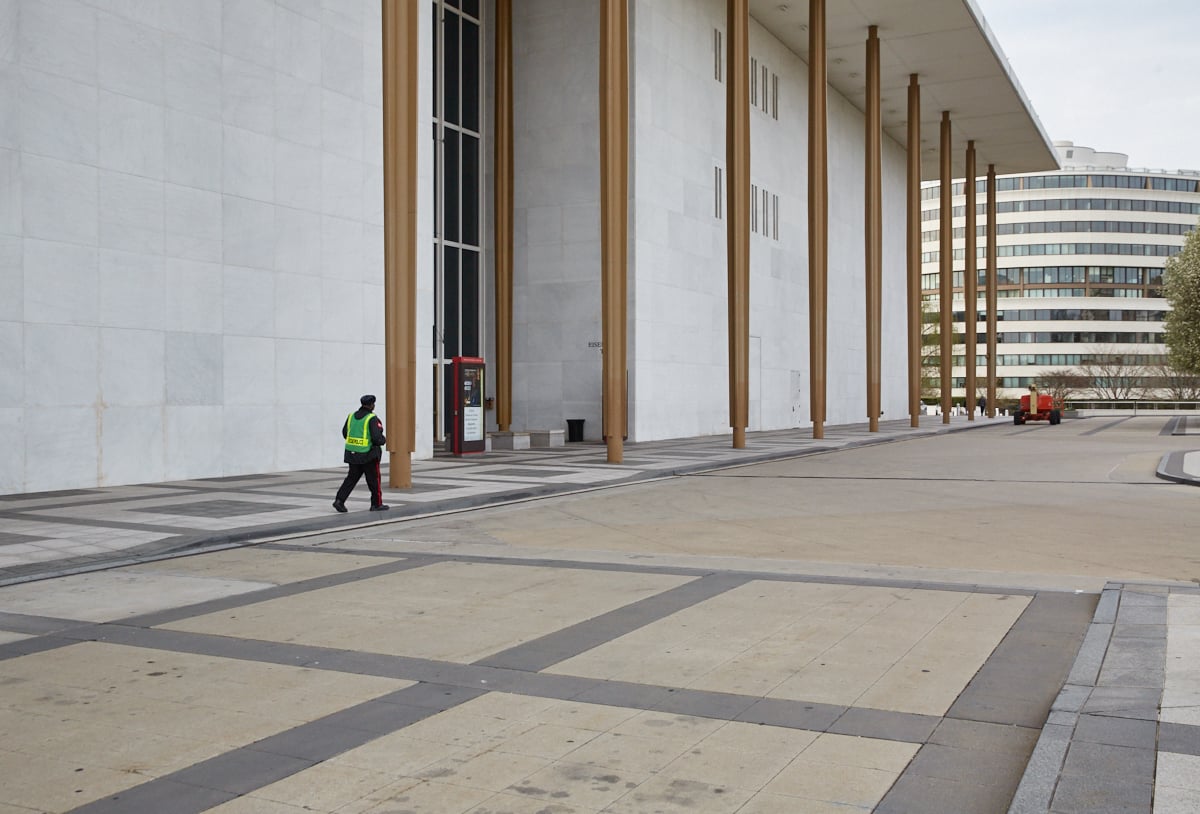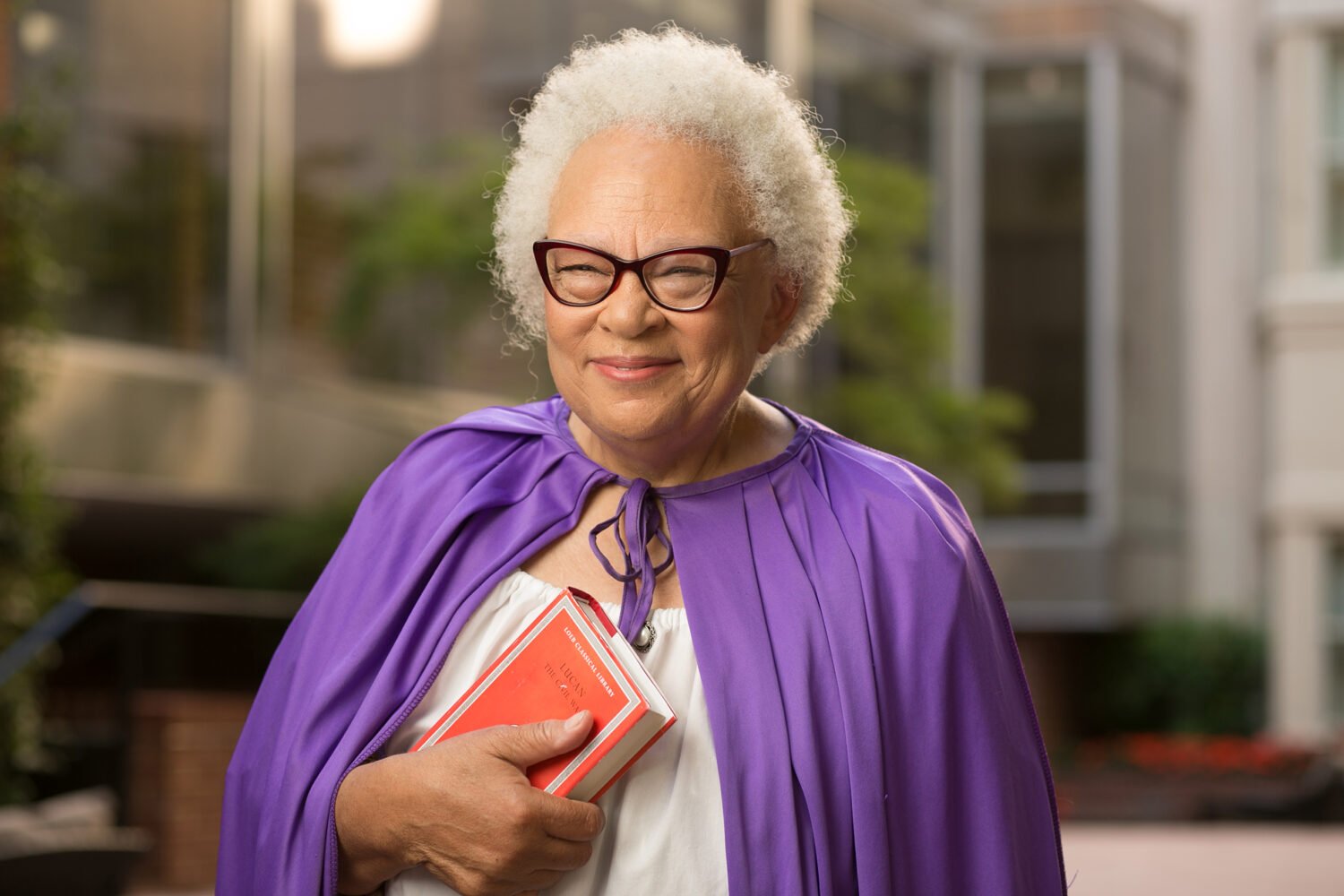Editor's note: Jack Blackburn died of cancer in January 2009.
Each spring for more than a generation, thousands of high-schoolers have waited for word about their future from Charles Deacon and Jack Blackburn. Deacon has been dean of admissions at Georgetown University since 1972; Blackburn, his counterpart at the University of Virginia, has been on the job since 1985.
Together the two have logged 81 years in college admissions—years that have seen the process of getting into college turn into a hypercompetitive frenzy that frustrates parents, kids, and universities alike.
Deacon, a DC native and alumnus of Gonzaga High, was the first in his family to go to college. He graduated in 1964 from Georgetown—then all-male—and started working in the admissions office in 1965 while getting his master’s degree in English. He became head in 1972.
Blackburn, who grew up on the Eastern Shore and graduated from Western Maryland (now McDaniel College), spent 11 years as director of admissions at Mary Baldwin College in Staunton, Virginia, before joining the admissions staff at UVa in 1979 under John Casteen, now the university’s president.
Deacon and Blackburn have helped lift their schools into the ranks of the nation’s elite—Georgetown and UVa both crack the U.S. News top tier of national universities. This success, combined with the many well-qualified kids applying to college, means the two turn down a lot of very smart students. Georgetown accepts roughly one out of every five of its 16,000 applicants; UVa accepts 34 percent of its 18,000 candidates.
Has admission to top schools become little more than a crapshoot?
Deacon: To some degree, it has. It began back in 1995 with the recentering of the SAT, which suddenly made many, many more people have high scores. In the year of recentering, Georgetown went from having 95 students with a 750 verbal score in our applicant pool to more than 1,000. Suddenly, the Lake Wobegon effect was 1,000 people felt themselves more qualified than they used to be. Today our applicant pool has more than 3,000 kids with equivalent scores.
Blackburn: In addition to the SAT changes, grades have inflated dramatically. Some schools operate on a 4.0 scale and weight the honors, Advanced Placement, or International Baccalaureate classes. A generation ago, we would say a 3.75 sounds pretty good. But today, it may be in the middle of the class or maybe in the bottom half of the class.
I think, too, students are taking more AP classes, and in some states the IB program is growing. In Virginia it’s growing dramatically; the state has the third-largest number of IB high schools in the country.
Kids are applying to more colleges. I’ve talked to high-school counselors who say they’ve had kids apply to 16 or 18 schools.
I do think students are probably better prepared—at least the group that we see. The students who are applying to Georgetown and Virginia are probably better prepared than they were a generation ago.
So with more applicants with higher scores, has what you look for changed?
Deacon: We’re still true to our principles. If you want the best possible class you can get, you admit them. But some schools are strategizing whom they admit on more than just who are the best candidates.
For example, a lot of colleges pay attention to the yield—the number of your offers that are accepted. Despite the fact that U.S. News dropped yield as a factor in its college rankings, it’s still considered a measure of a school’s popularity. So you have places putting the very top candidate in their applicant pool on a waiting list because they think the kid’s using them as a backup. The kid who’s first in the class with a near-perfect SAT score may apply to ten schools and get wait-listed at seven.
We know it’s very hard to yield African-Americans. So schools can improve their yield by passing by the top 100 African-Americans in the applicant pool, where maybe you’d get about five or six to enroll, and admitting the third 100, where you’d get 75 percent. That’s what a lot of people do; they say they’re trying to “manage their enrollment.”
Jack and I—we’re dinosaurs. We’re still in the old “dean of admissions” mentality where admissions is an activity of the faculty deciding who gets to come and study here. But that term—“enrollment management”—is going to come even to Georgetown and Virginia ultimately. Some admissions officers are now called “vice president for enrollment,” and they report directly to the president. Many of these people are on the move, going from place to place. These are people who are known producers of the numbers a school needs to appear more selective and move up in the rankings. Institutions buy into them.
It would be very uncomfortable working at an Ivy League school right now. They are ranked internally one against each other. If you’re number eight, you’re counting numbers, scrambling like hell to get better.
Blackburn: Like Charlie, we go for the best students we can get. We take our chances. We know some of these kids are going to go to Harvard and to Princeton. But we take our shot at them.
There’s a lot of confusion about who gets in and why. We have four schools for freshmen—nursing, architecture, engineering, and arts and sciences—and each varies a bit in terms of how selective it might be or exactly what we’re looking for.
Then we have the in-state and out-of-state question. At least 67 percent of our students have to come from Virginia. So it’s tougher to get in from out of state. A student from Montgomery County may be at the top of the class but not get in, while a student across the river in Fairfax who’s a little further down in the class would get in.
Have you considered joining the group of colleges that have declared they will not give data to U.S. News?
Blackburn: No, we haven’t discussed it. Lots of colleges and universities realize that the 800-pound gorilla in the room is the U.S. News ranking. Some institutions are making decisions based on how they can improve in the rankings: Would it be better for us to hire more faculty and have fewer classes with more than 20 students? Or to put more money into need-based aid and increase the yield?
These moves are calculated to improve the ranking, but the end result is that it probably makes the institutions better. So I can’t be totally critical of the rankings.
Deacon: We haven’t given any thought to joining the boycott. But what I object to is the precision of the rankings—saying you can rank schools one, two, three, four, five. If you did them more broadly—say, grouping the top 25, the second 25—that would be helpful.
Families form judgments about colleges in different ways. People at Andover or St. Albans have lots of resources and know very well who the top ten colleges are. But the kids who are from first-generation college-going families out in the central valley of California often depend on the U.S. News rankings. To the extent that U.S. News gets it right, maybe that’s okay. But those families may be driven to making decisions on the wrong basis.
Jack, what are the proportions of applicants who get in from within Virginia versus from out of state?
Blackburn: This year about 43 percent of our in-state applicants were offered admission; out of state, it was about 24 percent.
A lot of people believe there’s a limit on the number you’ll admit from Northern Virginia.
Blackburn: I’ve been in admissions at UVa since 1979, and I’ve always heard the complaint that we are unfair to various parts of the state. We try to admit the best-qualified students. There are some school districts where students take AP courses on television or online. The college-going rate might be less than 25 percent.
If somebody thrives in that situation, we’re going to try to admit those kids. We think as a state university we have an obligation to admit students from rural and inner-city parts of the state.
Having said all that, half of our in-state students come from Northern Virginia. So if it weren’t for the Northern Virginia schools we wouldn’t have the strong core of our student body that we have.
Deacon: Georgetown gets a relatively small number of applicants from the Washington area. The problem in Northern Virginia is Thomas Jefferson, the science-and-technology magnet school. Jefferson robs all the local schools of their best students, leaving behind a culture that’s more dominated by athletics and rock music and less dominated by APs and high academic achievement. It’s great for the kids who get to Jefferson, but it leaves behind a lot of schools where the top of the class is a lot thinner.
So we don’t see a lot of great candidates from Northern Virginia high schools other than Jefferson. Even those that rank high in the class don’t look great to us. We see much stronger candidates from Montgomery County schools than from Fairfax.
What do you say to affluent parents who say, “Because you’re reaching out to kids in low-income communities, my kid didn’t get in?”
Deacon: The odds favor that kid getting into a lot of places, more so than the poor kids from rural communities. So it’s not like this kid’s life is going to turn out badly. He’s going to have choices.
Blackburn: The number of truly low-income students going into selective colleges is tiny. We’re at about 9 percent. So we feel we have an obligation to make ourselves accessible, particularly to state residents from low-income backgrounds.
There are stories that some schools artificially jack up the number of applications so that they can turn down more students and look more selective. They’re mailing high-school students partially completed applications. True?
Blackburn: Yes. It borders on being unethical. It’s simply for the rankings.
Deacon: The colleges buy a student-search list and then use the descriptive data from that list to populate the fields on an application. The students get an e-mail as a completed application; all they have to do is hit “reply” and they apply. The school even waives the application fee.
Blackburn: It’s not just weak colleges and universities doing that. There are also some pretty well-established places.
Has the importance of any part of the application changed with more talented kids applying? Recommendations? The essay?
Blackburn: We know most of the teachers and counselors writing these recommendations. Somehow teachers lay it on the line. I don’t see them gilding the lily. They’re used to grading the students every week, so they can be very straightforward and helpful.
Deacon: I know a lot of kids are getting help on the essays; the world of the college consultant is alive and well. Some of the brightest kids in the best schools also have consultants at $35,000 a case. So we know that if we didn’t have our thumb on the scale trying to level the playing field, that would be a real unfair advantage.
Exceptional teacher recommendations do stand out. These people are busy. You get a two-page, single-spaced, thoughtful recommendation, you know this is a teacher who really likes this student.
In all honesty, it’s more the applicant’s overall circumstances and accomplishments that drive the process rather than all the fine rounding out of things, like essays and teacher reports.
Most of our applicants are reviewed by committees of faculty. That’s where essays and teacher recommendations can become a differentiating factor. The cream will rise to the top. And yes, that kid who was valedictorian from Cicero, Illinois, with the so-so scores, a Latina who wrote a fabulous essay about how her family’s worked day and night to give her this opportunity—she, believe it or not, will rise to the top of that pool ahead of all those kids with the stellar scores and great teacher recommendations because her life story is so compelling.
So what may matter is not how wonderfully written the essay is as much as what it reveals about a person. Or it could be that teacher whose report sheds light on that particular candidate’s situation.
How do coaches tell you whom they want, and how does that affect your decisions?
Deacon: Coaches give you a rank-ordered list of whom they would love to see get in. Universities in turn—which have hired the coaches and invested resources in having competitive athletic teams—ask the admissions process to respond in varying numbers. It’s a balancing act.
Not a lot of admissions people are pleased with the degree to which athletics is a big part of our world. But in our culture, competitive athletics is a big deal. It’s part of the community spirit, part of the school identity.
I would say there are probably at most 10 percent of our students who will get an athletic tip in the admissions process. A tip can be significant or not, depending on the athlete’s talent and the profile of the sport. We’ll tip a bit for our sailing team, which happened to be first in the country last year, but we’ll tip a lot more for men’s and women’s basketball, which are big spectator sports that carry the spirit of the school.
What worries me is that I consider the athletic world almost out of control. By the middle of August, our lacrosse coach is saying, “I’ve got to say something to these kids because they’re otherwise going to go to UVa or wherever.” Before these kids even start their senior year, we’re supposed to commit to them.
Blackburn: We deal with athletes in a similar way. I meet with the athletic director and determine the number of spaces for each team. And we set aside 160 seats for the 25 varsity teams. I will go through as many as 900 preapplications from athletes, hopefully in the fall. But more of the coaches are coming to me, even in the spring, with juniors. And this sort of early commitment—I just don’t like it. If kids change their senior program, all sorts of problems can develop.
I’m always encouraging coaches to go after stronger students. But getting that combination of a kid who can compete in a Division I program and also handle the academics—it takes some doing.
We provide all sorts of support services for athletes. Many of our athletes are better students in college than they were in high school. I think there’s an ethos within our institution that everybody graduates, everybody stays to finish. I think they figure out that they should attend every class and spend lots of time in the library in order to do well here.
There are a lot of things we’d love to change. I’ve been arguing for years that the minimum number of core courses in English, math, science, history, and foreign language should be increased for student athletes coming to college. The NCAA requirement is 15. That is far below the level we expect to see among our nonathletes. My view is that the stronger the high-school program, the better the student is prepared for college-level work. I would like to see a requirement of at least 20 core course units.
My sense is wherever you set the bar, these kids who think they’re going to have a career out of football or basketball, they’ll try to reach the bar.
What about children of alumni and potential donors?
Blackburn: We give special consideration to alumni children. Legacies typically make up about 13 percent of our class. Generally they’re very good students. We did a study a few years ago, and legacies academically were in the middle—almost as high as the out-of-state students, a little above the all-Virginia group.
On donors—we’re in a $3-billion fundraising drive, so that’s a consideration. State funding has been cut to the point that only 9 percent of our operating budget comes from the state. So we operate in a fashion that’s much like what you find in a private college. A small number of students—25 or 30—are admitted because of the gifts the family has made to the university.
Hundreds of people are involved in the fund drive and help us raise money. We have people who aren’t able to give large gifts but who have been loyal and devoted, working for us in their community, representing us at college nights, seeing students and families for years. We take that into account as well. ➝
Deacon: We have a very similar situation. The overall admit rate is 20 percent; the admit rate for legacies is about 37 percent. They end up being about 10 percent of each class.
It’s not just because you are a legacy that you get a tip; it’s the families who have been significantly loyal—the gladiators in our alumni fundraising, for example. We consider that to be an investment in our alumni in terms of their loyalty to us.
It’s not surprising that the academic profile of the legacy cases is as good as or better than the overall profile because many of these kids get in on their own.
On the fundraising side, we also have a small number of “development potential” candidates. If Bill Gates wants his kid to come to Georgetown, we’d be more than happy to have him come and talk to us. But not all those special cases end up being people who give a lot of money. We have children of Supreme Court justices, senators, and so on apply. We may give extra consideration to them because of the opportunities that may bring.
What do you think of the trend of hiring consultants to advise families on applying?
Deacon: Not much. I don’t talk to them. We’re famous for not being willing to talk to those folks.
Blackburn: The people who hire consultants usually have their kids in the best schools in the country. I think it’s just to buy a little peace for themselves. Others may do it just for the little edge it might give them. But I’m not sure that it does. I haven’t seen it make any difference in our process.
Deacon: Over a generation, as the competitive pressure increased, there’s also been a lot more outreach to diversify the student population—geographically, socioeconomically, and ethnically. And in the zero-sum game, the Andovers or Exeters became the net losers. Those families are among the most powerful, affluent people in the world, and they’re using the consultants to try to buy another edge.
Much as elite colleges have reached out and diversified, the mobility in society has shifted and changed again, and the advantages have ultimately gone back to the affluent. There are more affluent people than there used to be, a larger number of poor people, and a slightly shrinking middle class. And the vast majority of the spaces in the Ivies, the Georgetowns, and so on are populated by people from that small but growing group of the affluent.
A financial if not cultural elite still controls the vast majority of the spaces at the top schools. And increasingly so—almost getting back to the way it was in the first part of the 20th century.
What’s happened? Don’t underestimate the impact of sticker shock. When the price tag for tuition, room, and board is $50,000 a year and rising, a large percentage of the population just opts out. We’re scouring the country, hoping to give free rides to kids from families with incomes below $60,000. But you can’t find very many people at that income level who’ve got an exceptional SAT score. Unless we put the thumb on the scale in the admissions process, we’re not going to find anybody.
Meanwhile, all the top colleges look fat and happy, right? We get thousands of applications and enroll classes with the highest SAT scores ever. But are we influential anymore? All we’re doing is preserving the elites.
Blackburn: There’s a rare case you’ll see a kid from a very poor background make high SATs. It’s like the Hope diamond. You just don’t see them where parents haven’t been past eighth grade and there are no books in the house. If one school commits to taking more low-income students, its profile drops—not on class rank but on SAT scores. But if we’d all go into it and all have our scores drop, then it wouldn’t matter.
What advice would you give students who apply?
Deacon: Look at it as an opportunity to get to know yourself well. Look at it as a life-changing experience.
Look at lots of options. Don’t fixate on one school. Have a number that you like and look at it as a learning experience. This may be the first time you’re out there on your own facing the possibility of being told no. Take it as a positive, expansive experience.
Blackburn: The journey is one of the important parts of this. Kids typically start the process in January or February of their junior year. From that point through to April of the senior year, they probably will be different people. During that time, they will have to evaluate themselves in order to describe themselves in their application essays. They will have to present their credentials to a bunch of strangers. That’s intimidating, but the end result is most people know themselves better.
Did You Get In?
How selective are local universities? How popular are they? Here’s how some area schools compare.
—Emily Leaman
| College | Number of applicants | Percentage accepted | Percentage of accepted students who enrolled |
|---|---|---|---|
| University of Maryland | 23,578 | 45 | 38 |
| George Washington | 20,000 | 32 | 38 |
| University of Virginia | 16,300 | 37 | 52 |
| Georgetown | 15,070 | 22 | 47 |
| American | 15,058 | 53 | 17 |
| George Mason | 16,718 | 61 | 45 |
| Howard | 8,667 | 48 | 37 |
| Catholic | 3,515 | 81 | 30 |
Data are from 2006. Sources: university admissions offices; American University figures from U.S. News & World Report
Remembering Al Sanoff
Alvin P. Sanoff, a contributing editor to The Washingtonian, died in May at age 65 of pancreatic cancer. He conducted this interview with Charles Deacon and Jack Blackburn shortly before his death; he was friends with both men, having covered higher education for more than 15 years.
Born in the Bronx, New York, the son of Russian immigrants, Al graduated from Harvard and got his master’s degree in journalism from Columbia University. One of his first jobs was at the Baltimore Sun, where he covered the city’s race riots in 1968. He later became editorial-page editor of the Dayton Journal Herald in Ohio.
In 1977, Al came to Washington and joined U.S. News & World Report as an associate editor covering American culture, including education. In 1992, he was named managing editor of the magazine’s college guide. That guide’s rankings are controversial, but Sanoff believed passionately in helping readers—particularly those from families with little money or exposure to college—attain the best possible education so they could enjoy the kind of opportunities that his schooling opened up for him.
At The Washingtonian, we knew Al for his devotion to his wife and three sons and his love of the Red Sox. “He rooted for the Sox because they were the perpetual underdog,” says his son Geoff. “He never lost sight of himself as the son of Russian refugees and always sympathized with the underdog.”
Al also loved to talk. He could give you inside dope on a big name one minute and analyze policy issues the next. Writers with his intellect and range of interests are rare, and he’ll be missed by his many friends in journalism and by those he covered.
Al once wrote in a Harvard alumni publication that he got into journalism “to help bring about some incremental changes for the better in the world. I don’t know whether I’ve succeeded, but I like to think that in some small way I have.”
Contributing editor Al Sanoff died this spring after a distinguished career aimed at changing the world.

















